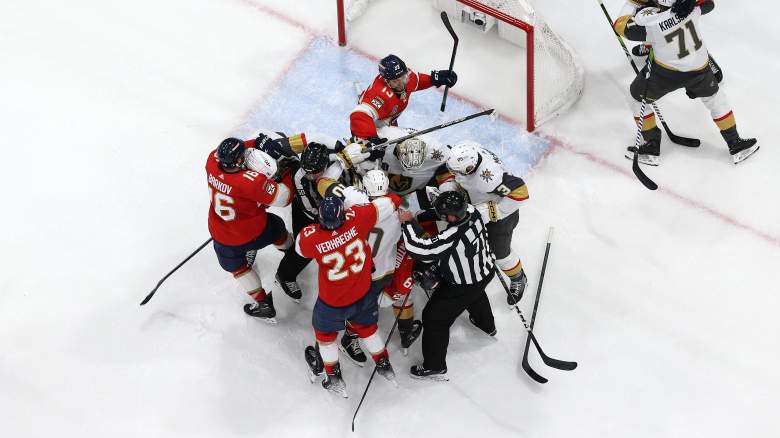
When it comes to NHL games, overtime is one of the most exciting things that could happen in the sport because of the adrenaline and the tension they always bring with them.
If you have watched regular-season games and recently tuned into the Stanley Cup Playoffs, however, you might have noticed some changes.
So far this postseason, entering play on Wednesday, April 24, there has only been one game ending in OT, the Game 2 3-2 victory by the Florida Panthers over the Tampa Bay Lightning on Tuesday, April 23, per Stathead.
Here is everything you need to know about NHL Playoff overtime periods before it’s too late!
What Makes the NHL Playoff Overtime Unique?
Before applying the latest changes to its rulebook, the NHL used different overtime formats in years past.
Right now, the NHL uses full 20-minute overtime periods during the playoffs. Both teams on the ice can skate their full five-man units for 5-on-5 hockey as well as a goaltender in net.
The quirk, however, is that overtime hockey is played under sudden-death terms. That means that the first team that scores a goal in OT automatically earns the victory and adds a win to their series record, putting an end to the game.
If the game remains tied at the end of the first 20-minute OT period, then another 20-minute period is played, then a third one, and so on and so forth until a team scores. If you’re wondering, yes, there might be an infinite postseason hockey game played at any time!
The longest NHL playoff game in history lasted six overtimes and a grand total of 116 minutes of 30 seconds of play, according to the NHL. It was a game between the Detroit Red Wings and the Montreal Maroons played all the way back in 1936, nearly 90 years ago. The Wings won the game 1-0 over Montreal.
What Differentiates Playoff Overtime from Regular-Season OT?
The main difference between postseason and regular-season (and preseason, too) overtimes is both the length and the lineups teams can put on the ice.
During the pre- and regular-season portions of the year, teams play 3-on-3 hockey (not including the goalie) during a short five-minute OT. That overtime, similarly to the postseason ones, is played under a sudden-death style of play, meaning the first team to score earns the win.
After those five minutes, however, there are no more overtime periods of hockey. Pre- and regular-season games move on to a shootout in which teams must select three shooters, each one attempting one shot.
The team that goes on to score the most goals during the shootout is the one awarded the win. There might be a case in which the third shooter of one of those teams doesn’t have a chance to score if one team goes up 3-0 with only the second team’s final shooter left to attempt a shot, as that effort would be useless.
If both teams are tied at the end of the first three shootout rounds, then the shootout moves on to a round-by-round basis. If one team scores and the other doesn’t, then the former is given the win after that round. If there is a tie, the rounds keep going.
Comments
Explaining NHL Playoff Overtime Rules Before It’s Too Late